Regional food: exploring culinary delights and their geographic boundaries on the web
- about 1 year ago
- 6 min read
Summer is travel time, so let’s embark on a global food journey on the web. Food is not just a means of sustenance; it is a reflection of culture, history, and identity. Regional dishes passed down through generations offer a glimpse into the unique flavors and traditions of different parts of the world. We know many of these regional dishes fall within geographical boundaries but are these boundaries visible on the web? So, grab a fork and join us on this culinary web journey!
When it comes to food, regional dishes can be a point of pride and identity for communities around the world. These dishes are often deeply rooted in the history, culture and traditions of a particular region. But have you ever wondered where the boundaries of these regions lie? At Dataprovider.com, we capture location information that is referenced on a website, for example, if a restaurant publishes its address on the website, we can determine the country, city or region. This can be different to where the website is hosted or where the creator or owner of that website is based. Using the information on a website, we are able to visualize where a website is located — or perhaps more accurately, where the website content most likely points to. So as we're going to explore regional foods, we are likely to detect a lot of restaurant websites that offer the regional dish on their menu. In this article, we’ll look at several regional dishes: the Weisswurst from Germany, Scotland’s national dish Haggis, the Torta Ahogada, a regional delicacy from Mexico, the Hawaiian noodle soup Saimin and Singapore’s Chilli Crab.
Germany is famous for its wide variety of sausages, many of which are regionally dependent. One of those is the Bavarian Weisswurst, a beloved traditional dish. It is typically made from minced veal and pork, flavored with parsley, mace, lemon zest and other spices. The sausages are traditionally boiled and served with sweet mustard, pretzels and wheat beer. This culinary tradition is deeply rooted in Bavarian culture and is typically eaten before lunch as part of a traditional “Fruehschoppen”.
Due to its origin and cultural association, Germans have come up with the term "Weißwurstäquator". The term is a play on words, combining "Weißwurst" (white sausage) with "Äquator" (equator). It humorously suggests that the cultural differences between northern and southern Germany can be as significant as the geographic divide represented by the equator.
Can we identify this boundary on the web? In Figure 1, you can see the geographical density of websites mentioning the term “Weisswurst” or “Weißwurst”. We can clearly see a concentration around southern Germany, particularly Munich. As you move further away from this center, there are fewer websites, but the boundaries are less clear, as one would expect from the concept.
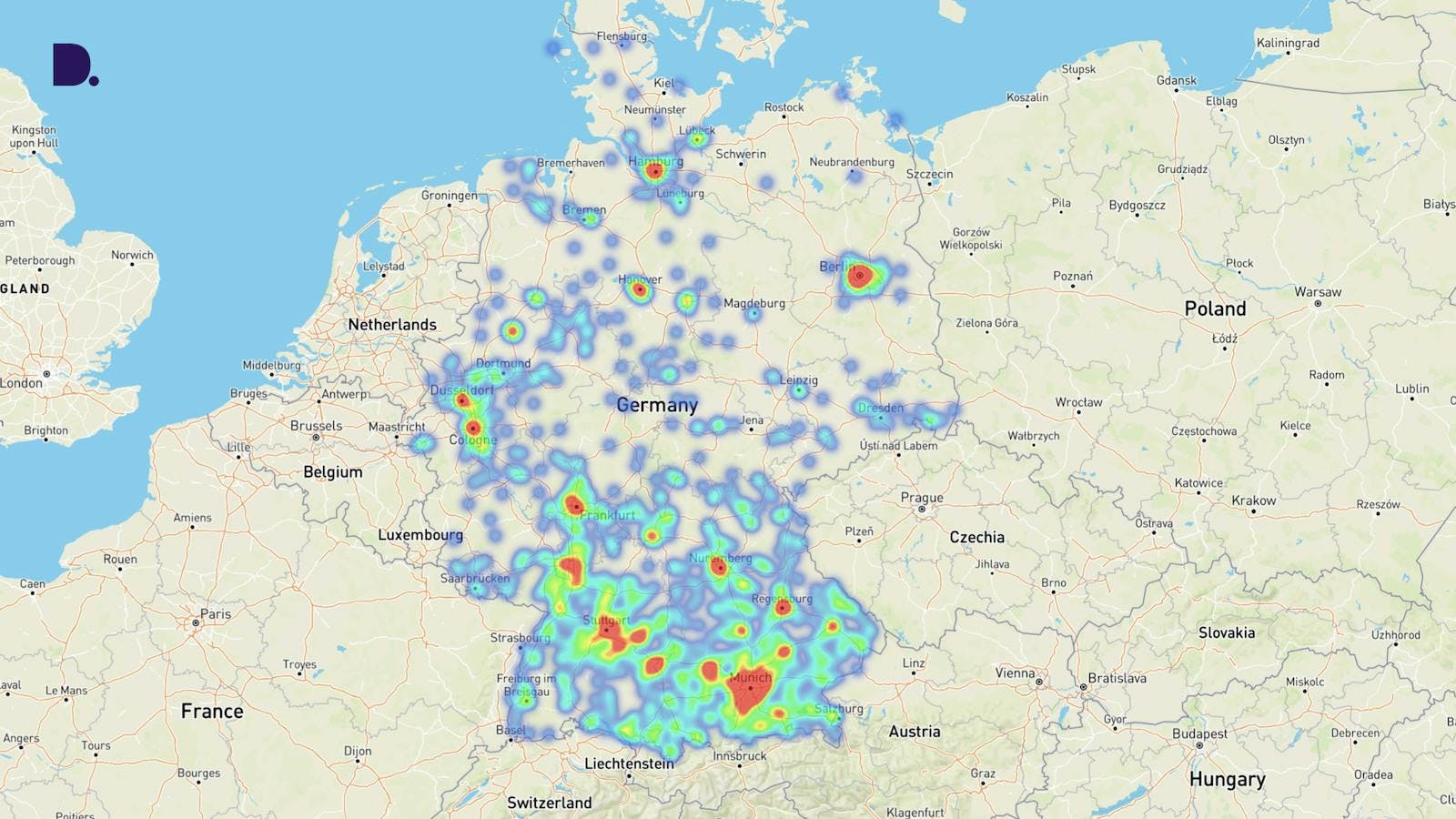
Our next stop is Scotland and the dish is Haggis, the traditional Scottish dish that is made from sheep's offal, including the heart, liver and lungs, mixed with onions, oatmeal, suet, salt and spices, traditionally boiled in the animal's stomach. The dish is typically served with mashed potatoes, mashed turnips and whisky sauce.
The origins of Haggis are somewhat mysterious, with various theories and legends surrounding its creation. Some believe that haggis was actually invented in England, with a cookbook from 1615 containing a recipe for a pudding called "Haggas" that is very similar to Haggis.
Despite its uncertain origins, Haggis has become an iconic dish in Scottish cuisine, often served at special occasions such as Burns Night, a celebration of the life and works of the Scottish poet Robert Burns. Similar to the Bavarian Weisswurst, Haggis has spread well beyond Scottish borders offline and online. In Figure 2, you can see the density of websites that reference Haggis. There is a clear Haggis belt spanning Glasgow and Edinburgh, but you can find Haggis in all parts of England and some parts of Northern Ireland. In Wales, on the other hand you might have a little bit of trouble, but this may be due to the fact that Haggis is spelled Hagis in the Welsh language and therefore doesn’t show up on some of these websites.
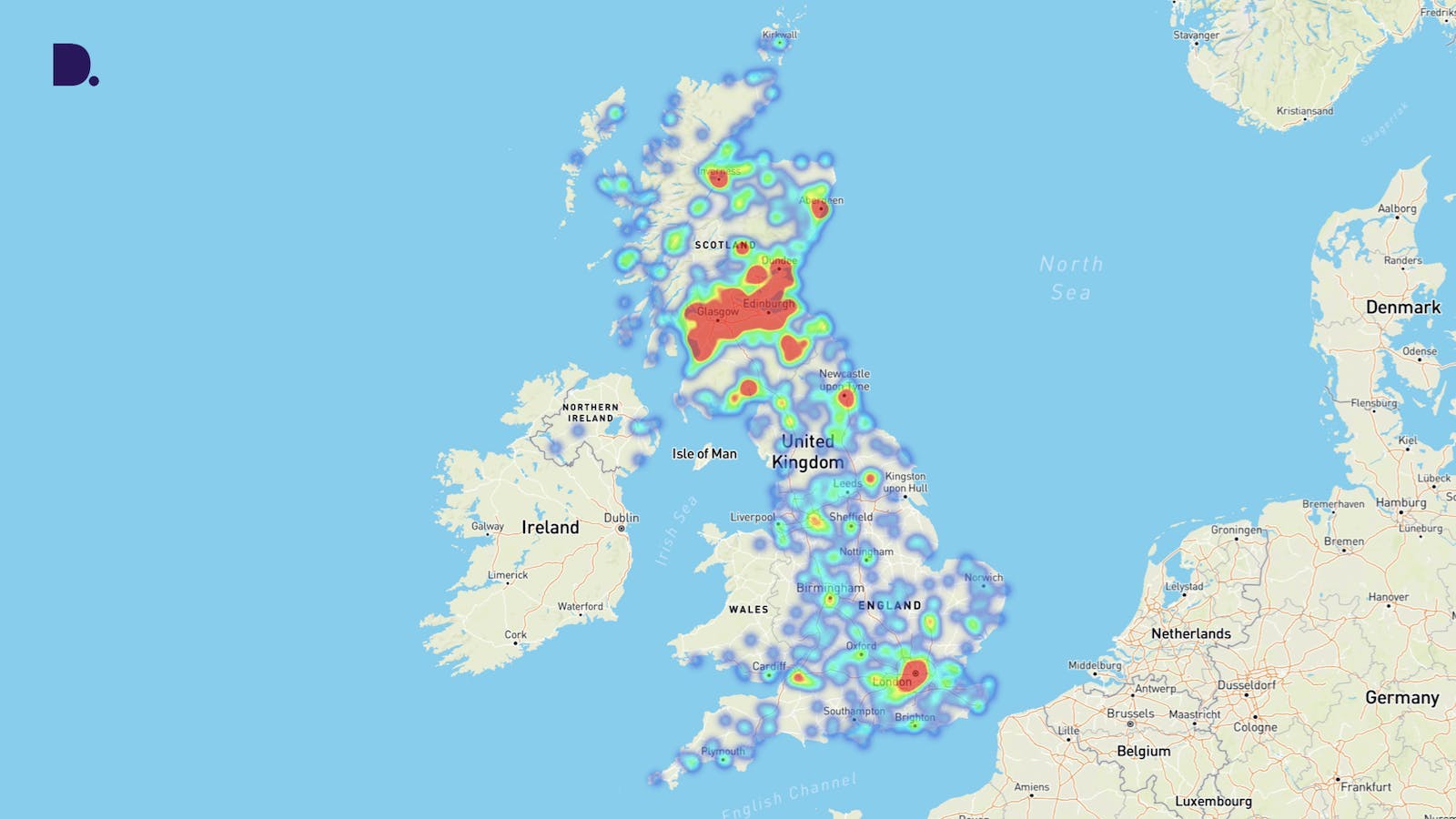
It seems that both the Bavarian Weisswurst and Scottish Haggis have spread well beyond their immediate cultural origin. Next, we’ll travel to Mexico to look at a local dish called “Torta Ahogada”. This delicacy is a sandwich made with birote bread, a type of sourdough bread with a thick, crunchy crust and soft interior. It is typically filled with fried pork and then drowned in a spicy tomato-based sauce. The dish originated in the city of Guadalajara, in the state of Jalisco. One local legend attributes the origin of the Torta Ahogada to an accident when a street vendor dropped a sandwich into salsa. You can taste this “original version” at one of the restaurants called Tortas Ahogadas El Güerito.
People go to great lengths to seek out Tortas Ahogadas in places outside of the region. But according to our data, it’s not that easy. In Figure 3, you can see that, at least on the web, the dish really is quite specific to Guadalajara. You are likely to find it in Mexico City too, but outside of these centers, it might be tricky.
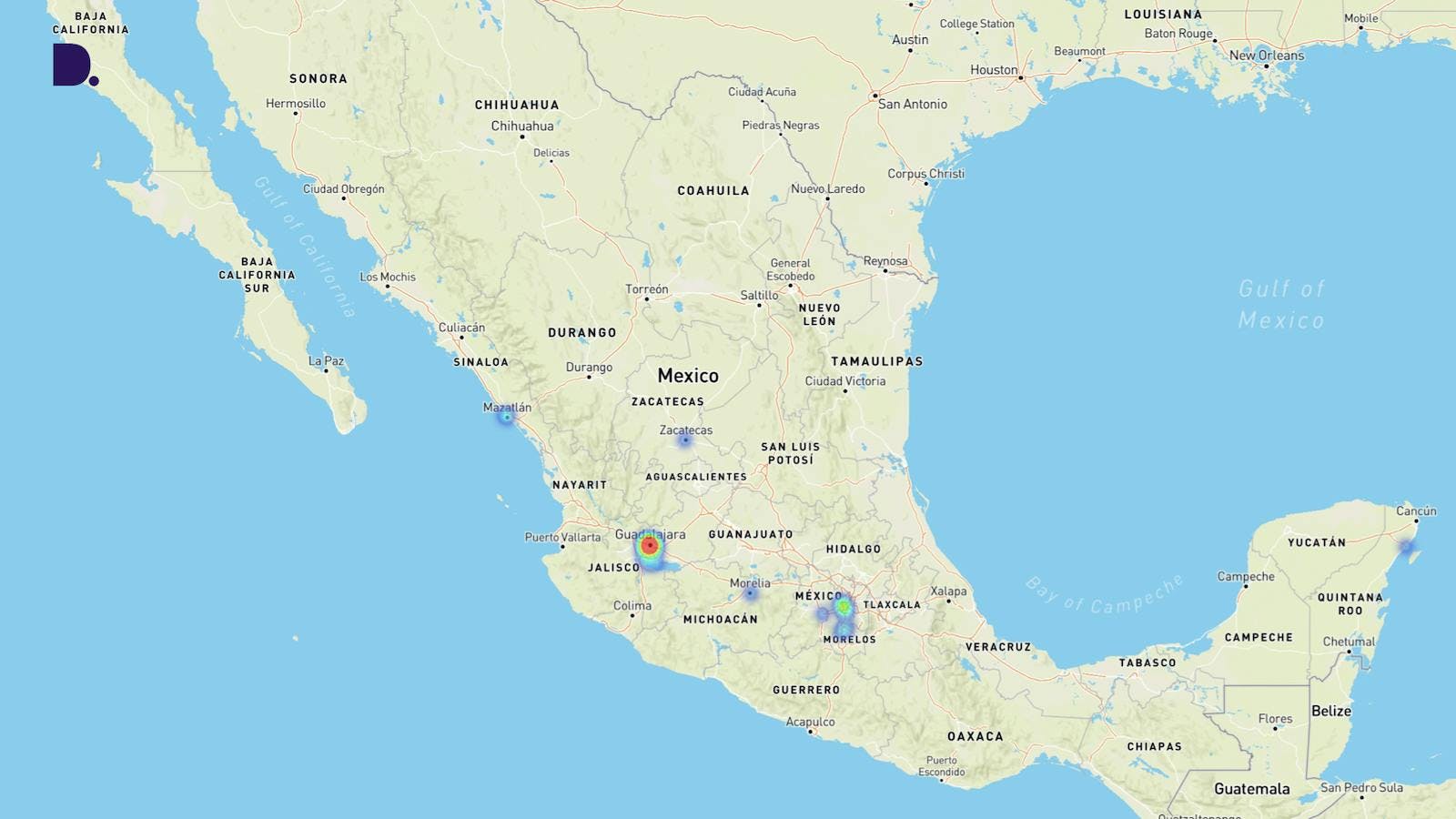
One thing to notice about the three dishes we discussed above is that outside of their immediate origin region, they can usually be found in the countries’ metropoles, likely reflecting migration patterns from rural to urban areas.
Another example that nicely reflects these migration patterns is the traditional noodle soup dish, called Saimin from Hawaii. Traditionally, saimin consists of soft wheat egg noodles served in a hot dashi broth, garnished with diced green onions and a thin slice of kamaboko (fish cake). However, modern variations of Saimin may include all kinds of additional toppings such as char siu (barbecued pork), sliced egg, shredded nori, or even sliced spam.
Initially consumed by the working class, Saimin has become a popular dish found in a range of establishments, from fast food chains to upscale restaurants. To experience the flavors of saimin, one can visit local eateries in Hawaii that specialize in this dish. But let’s have a look at where else you can find Saimin. Figure 4 shows that outside of Hawaii you are likely to find it in any of the main metropoles on the US West Coast. The distribution of websites referencing Saimin nicely reflects how a dish may spread. First, it reaches the closest metropoles outside of the region.
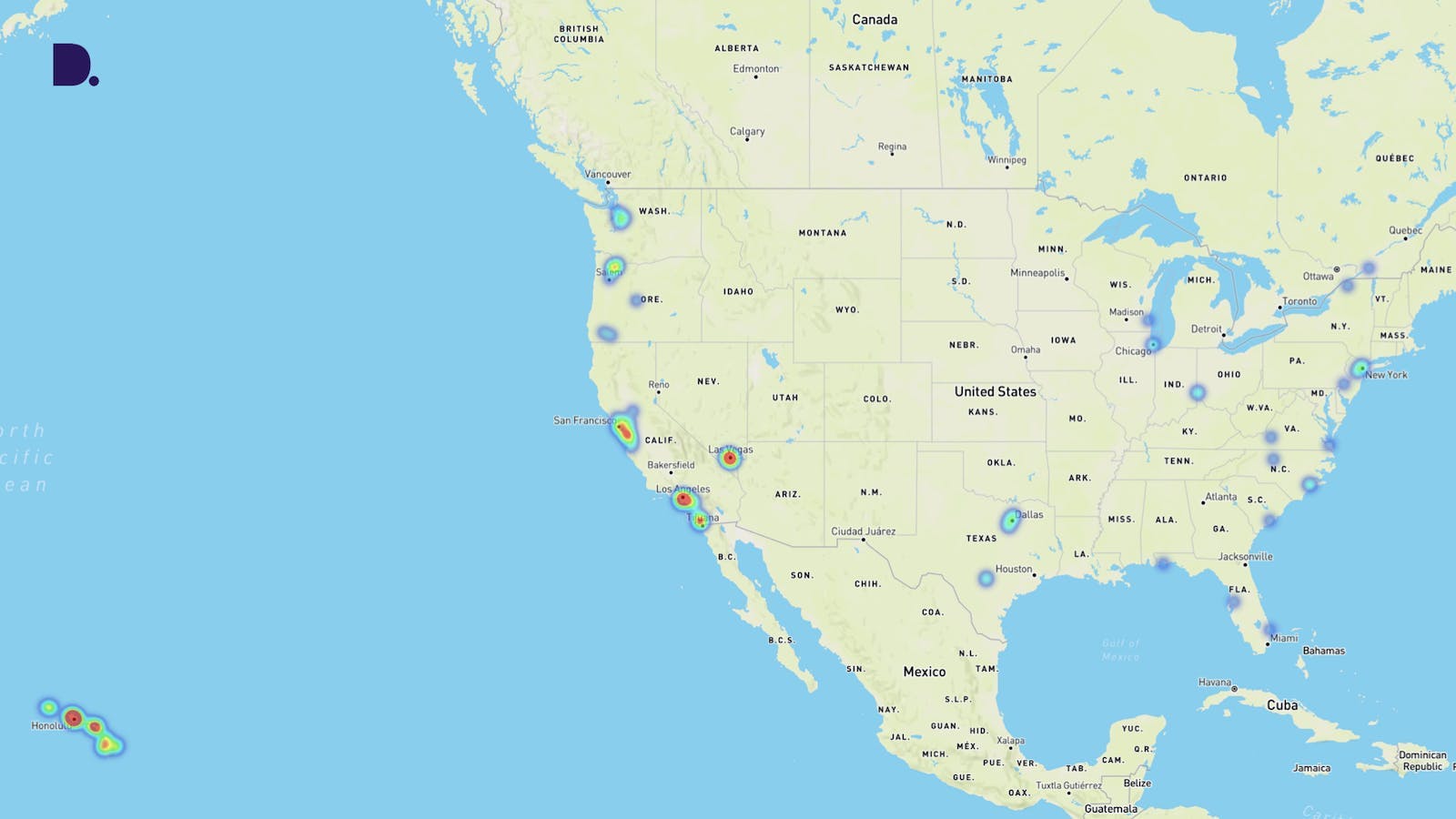
But are there any popular local dishes that have spread globally? For our last culinary stop, we are heading to Singapore. The famous Singaporean “Chili crab” is believed to have originated in the 1950s, created by a cook named Cher Yam Tian, who wanted to modify her stir-fried crab recipe. She experimented with adding chili and tomato-based sauce to the dish, resulting in the creation of chili crab as it is known today.
Chili crab has become an iconic dish in Singapore and is often referred to as the country's national seafood dish. Its popularity has spread internationally, as can be seen in Figure 5. The chili crab has made it to Australia, Europe, North America and other parts of Asia. You can even find it in Peru.
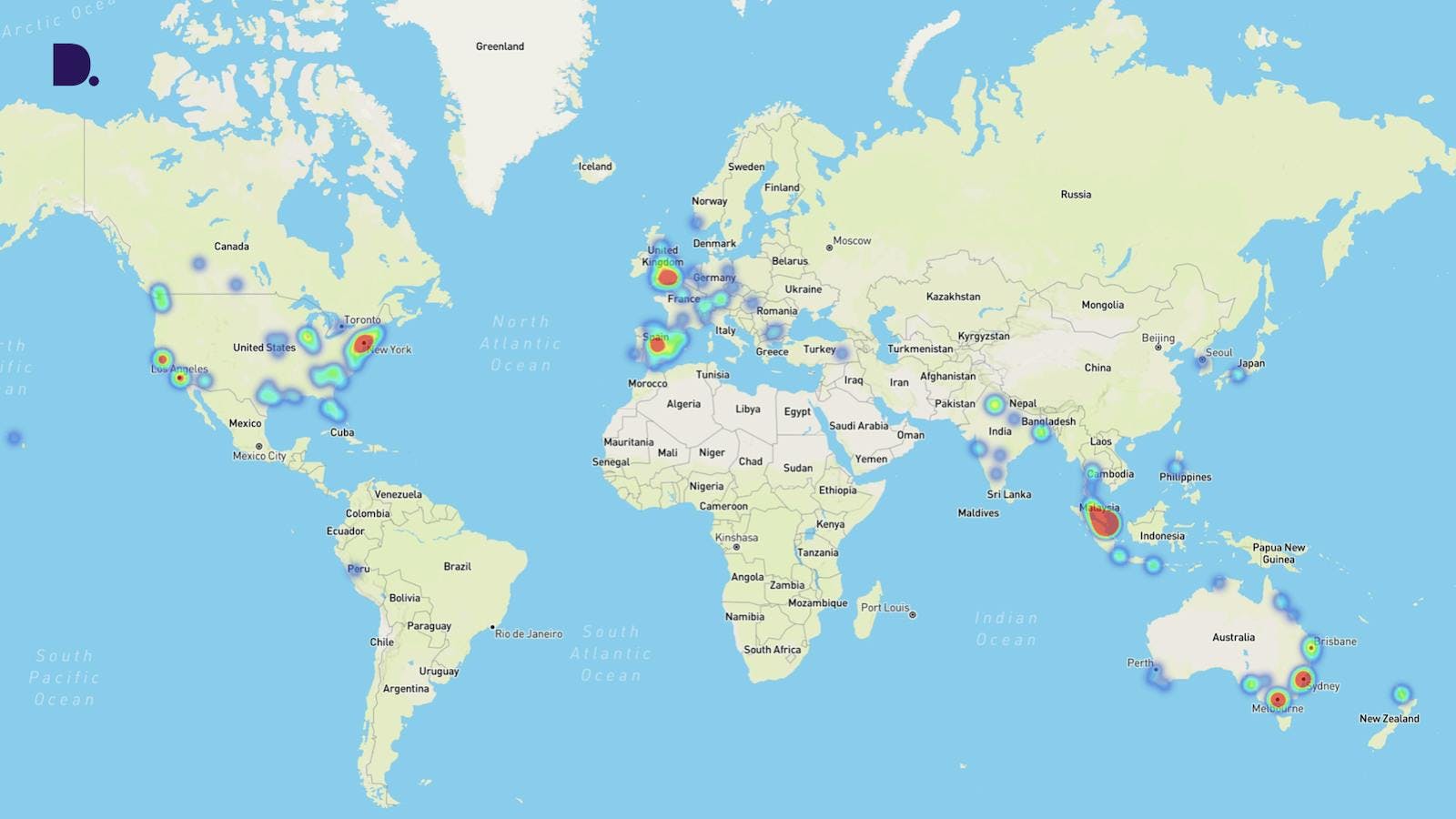
Traditional cuisine serves as an expression of cultural identity, preserving heritage and customs as it travels across borders. Emigrants bring their culinary traditions with them in an attempt to keep their culture alive in new places. With the widespread use of the internet and the abundance of web data available, we can now visualize the boundaries of these regional cuisines in fascinating ways. By analyzing the online presence of different dishes and ingredients, we gain insights into the popularity and influence of regional foods.